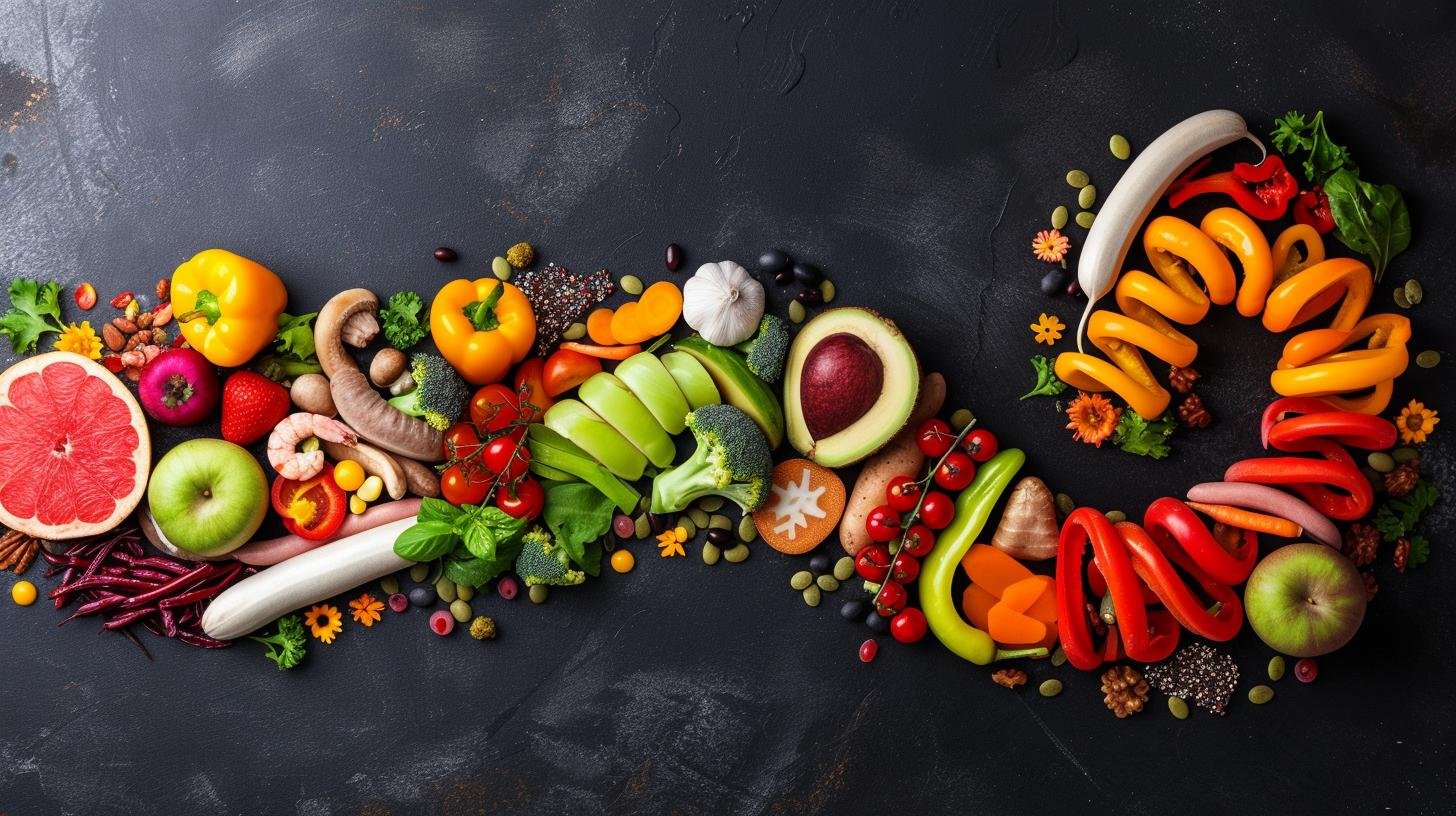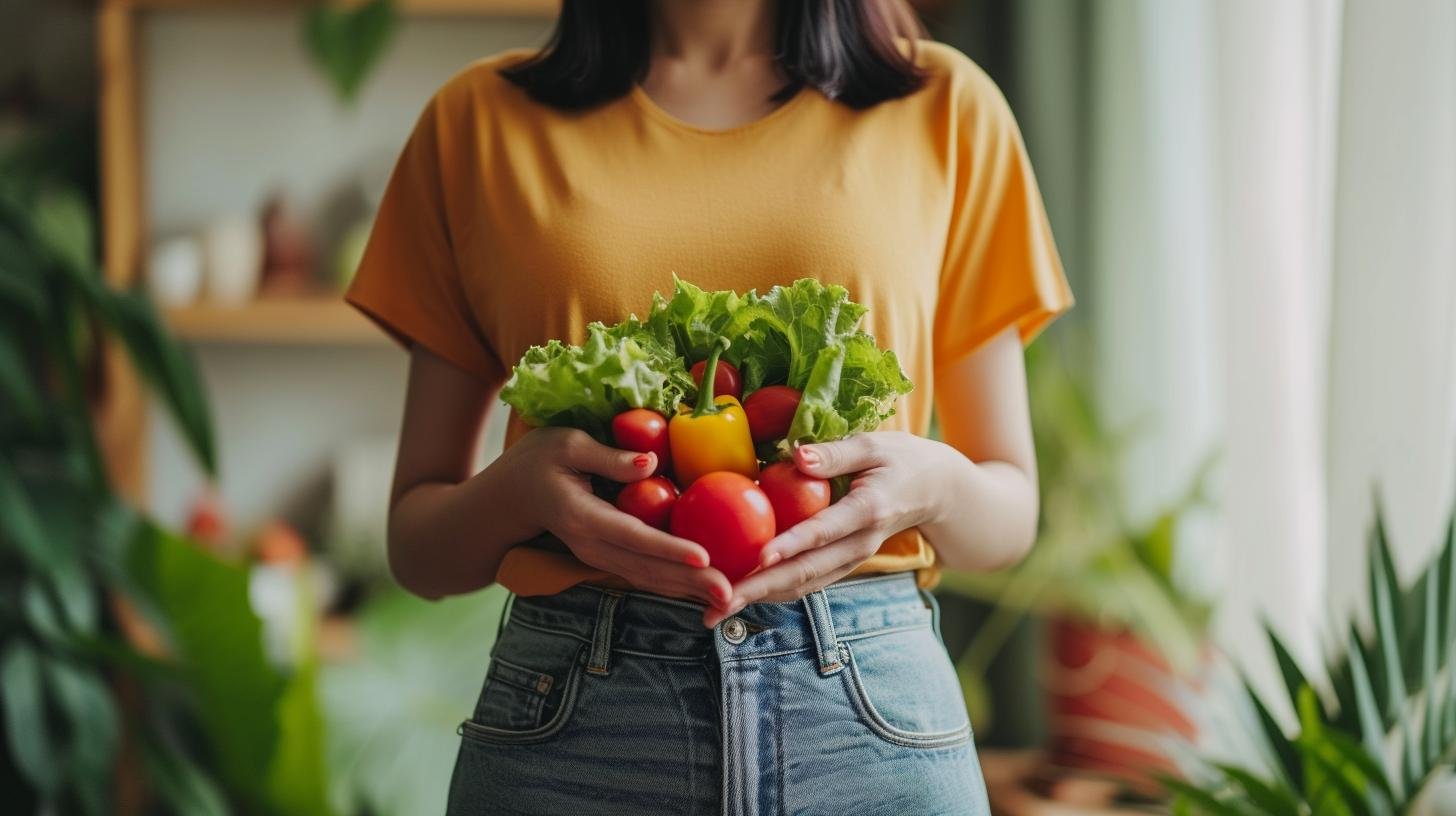Have you ever wondered where and how food is finally digested in your body? The journey of food through the alimentary canal is a complex and fascinating process, involving several organs and stages of digestion. Understanding this journey can provide valuable insight into the importance of proper digestion for overall health and well-being.
The alimentary canal, also known as the digestive tract, is responsible for the breakdown, absorption, and elimination of food. This intricate system starts with the mouth, where digestion begins, and continues through the esophagus, stomach, small intestine, liver, pancreas, large intestine, rectum, and anus. Each part plays a critical role in ensuring that nutrients are absorbed while waste products are efficiently eliminated from the body.
In this article, we will explore the journey of food through the alimentary canal in detail. From the initial stages of digestion in the mouth to the final absorption in the small intestine and elimination in the large intestine, we will delve into each organ’s function and its contribution to the overall digestive process. Additionally, we will discuss factors that can affect digestion and common digestive disorders that can impact this essential bodily function.
By gaining a better understanding of how our bodies digest food and absorb nutrients, we can make informed choices about our diet and lifestyle to support optimal digestive health. So let’s embark on an enlightening exploration of how food is finally digested in which part of alimentary canal.
The Mouth
Mechanical Digestion
Chewing is a vital part of mechanical digestion, as it helps to increase the surface area of food particles, making it easier for enzymes to break them down further in later stages of digestion. The teeth play a crucial role in this process, as they grind and crush food into smaller pieces, allowing for better assimilation of nutrients.
Chemical Digestion
In addition to mechanical digestion, chemical digestion also begins in the mouth. Saliva contains enzymes like amylase, which start breaking down carbohydrates into simpler sugars. This initial step in chemical digestion prepares the food for further breakdown and absorption as it progresses through the alimentary canal.
The tongue also plays an important role in the process of digestion by helping manipulate food within the mouth and aiding in swallowing. Once food is thoroughly chewed and mixed with saliva, it is formed into a bolus and ready to be transported to the stomach for further processing.
Overall, the mouth serves as a crucial starting point for the digestive process, laying the foundation for efficient nutrient absorption later on in the alimentary canal. Understanding how important proper mastication and saliva production are can lead to better overall digestive health and nutrient assimilation throughout the body.
The Esophagus
Once food has been chewed and mixed with saliva in the mouth, it is formed into a bolus and pushed down the esophagus by a series of coordinated muscle contractions known as peristalsis. This involuntary action helps move the food along its journey through the alimentary canal and ensures that it reaches its destination – the stomach.
Despite its simple function of transport, the esophagus can be prone to certain disorders and conditions that can affect its ability to efficiently carry out this process.
One common disorder of the esophagus is gastroesophageal reflux disease (GERD), which occurs when stomach acid flows back into the esophagus, causing irritation and discomfort. Another condition, known as dysphagia, involves difficulty swallowing and can be caused by various factors such as muscle weakness or nerve damage. Understanding these potential issues with the esophagus can shed light on how they may impact the overall process of digestion.

In summary, while often overlooked in comparison to other organs involved in digestion, the esophagus plays a critical role in ensuring that food reaches its final destination within the stomach. By understanding its function and being aware of potential disorders that may arise, individuals can gain insight into how this part of alimentary canal contributes to where food is finally digested.
| Esophagus Function | Esophagus Disorders |
|---|---|
| The esophagus transports chewed food from mouth to stomach | GERD: Stomach acid flowing back into esophagus |
| Performs peristalsis – involuntary muscle contractions | Dysphagia: Difficulty swallowing due to muscle weakness or nerve damage |
The Stomach
- Gastric Juices: The stomach secretes gastric juices, including hydrochloric acid and pepsin, which help to break down proteins in the food. These powerful digestive enzymes play a key role in reducing complex food molecules into smaller, more easily absorbed nutrients.
- Churning Action: The muscular walls of the stomach contract and relax to mix the food with gastric juices, creating a semi-liquid mixture called chyme. This churning action helps to further break down the food particles, allowing for better digestion and absorption in the small intestine.
- pH Regulation: The acidic environment created by gastric juices in the stomach is essential for activating enzymes and aiding in the digestion of proteins. The low pH also helps to kill off potentially harmful bacteria that may be present in ingested food.
- Storage and Release: In addition to digesting food, the stomach also acts as a temporary storage facility for food before releasing it into the small intestine at a controlled rate. This allows for optimal digestion and absorption of nutrients without overwhelming the small intestine.
- Importance of Mucus: The lining of the stomach is protected by a layer of mucus, which helps to prevent damage from gastric juices and maintains a healthy environment for digestion. This mucus also plays a role in protecting against digestive disorders such as ulcers.
The Small Intestine
Structure and Function
The small intestine is made up of three parts: the duodenum, jejunum, and ileum. The duodenum is responsible for receiving partially digested food from the stomach and mixing it with digestive enzymes from the pancreas and bile from the liver to continue breaking down food. The jejunum and ileum are where most of the absorption of nutrients occurs.
The surface area of the small intestine is maximized through finger-like projections called villi and microvilli, which increase its absorptive capacity. This ensures that essential nutrients such as carbohydrates, proteins, fats, vitamins, and minerals are efficiently absorbed into the bloodstream for use by the body.
Digestive Processes
In the small intestine, further chemical digestion takes place with the help of enzymes secreted by both the pancreas and intestinal cells. Carbohydrates are broken down into simple sugars like glucose, proteins are broken down into amino acids, and fats are broken down into fatty acids and glycerol.
These smaller molecules are then absorbed through the intestinal wall into blood vessels or lymphatic vessels. The process of absorption is facilitated by transport proteins located on cell membranes within the small intestine.
The Role of Bacteria
In addition to absorbing nutrients, the small intestine also plays a role in maintaining a healthy balance of gut bacteria. Beneficial bacteria in this part of.
the alimentary canal aid in fermentation and break down any remaining carbohydrates not digested earlier in the process. They also produce certain vitamins that can be absorbed across intestinal walls.
It’s important to note that while most digestion occurs in this region of digestive system, some final digestion does take place in other areas such as large intestines. However majority happens here with efficient nutrient absorption ensuring overall well-being.
By understanding just how substantial a role that small intestine plays’ one can truly appreciate ‘in which part so much’of alimentary canal food Is finally digested”.
The Liver and Pancreas
The liver, the largest internal organ in the human body, has a wide range of functions, including its role in digestion. One of its main responsibilities is to produce bile, which is essential for the breakdown and absorption of fats. Bile is stored in the gallbladder and released into the small intestine when needed. Once in the small intestine, bile helps emulsify fats, breaking them down into smaller droplets so that they can be more easily digested by enzymes.
The pancreas also plays a key role in digestion by producing digestive enzymes that are released into the small intestine. These enzymes help break down carbohydrates, proteins, and fats into smaller molecules that can be absorbed by the body. In addition to producing digestive enzymes, the pancreas also secretes hormones such as insulin and glucagon, which regulate blood sugar levels.
In addition to their roles in digestion, both the liver and pancreas have other important functions that contribute to overall health. The liver is responsible for filtering toxins from the blood, storing nutrients, producing proteins necessary for blood clotting, and regulating metabolism. The pancreas not only aids in digestion but also plays a critical role in maintaining proper blood sugar levels through its hormone production.

It is important to note that any issues with the liver or pancreas can significantly impact the digestive process. Conditions such as cirrhosis, hepatitis, or pancreatic insufficiency can disrupt normal digestion and nutrient absorption. Therefore, maintaining a healthy lifestyle through proper nutrition, hydration, and regular exercise can help support optimal liver and pancreatic function.
Overalllly it’s fascinating to see how both organs work together harmoniously with other parts of alimentary canal for an efficient digestion process resultinginto absorption of nutirents before reaching large intesting; ensuring balanced dietary habits substantially support liver & pancreatic functioning.
The Large Intestine
One important function of the large intestine is to host beneficial bacteria that aid in digestion and produce essential vitamins. These bacteria help break down certain substances that were not digested in the small intestine, such as fiber, and convert them into useful byproducts for the body. Additionally, they play a key role in maintaining a healthy balance in the gut microbiota.
The large intestine consists of several parts, including the cecum, colon, and rectum. In these sections, any remaining nutrients from undigested food are broken down and absorbed before being processed into waste material. The absorption of water from this waste material helps maintain proper hydration levels in the body and ensures that valuable electrolytes are retained.
Ultimately, the waste material is formed into feces and stored in the rectum until it is ready to be eliminated through defecation. This final stage of digestion highlights how essential it is for every part of the alimentary canal to work together efficiently in order to process food and extract nutrients while eliminating waste.
| Function | Role |
|---|---|
| Absorption of water and electrolytes | Helps maintain hydration levels and retain valuable minerals |
| Hosting beneficial bacteria | Aids in digestion and production of essential vitamins |
| Breakdown of undigested food matter | Conversion into waste material for elimination |
The Rectum and Anus
The large intestine is where the majority of water is absorbed from the indigestible food residue, leaving behind a semisolid waste product. This waste accumulates in the rectum, which serves as a temporary storage area for feces before defecation occurs. The rectum is lined with sensitive nerves that signal to the brain when it is time to expel waste from the body.
When the muscles surrounding the anus relax and allow for defecation, feces are pushed out of the body through this opening. The process of eliminating waste through defecation is under voluntary control, allowing an individual to decide when it is appropriate to empty their bowels.
Understanding how proper digestion leads to efficient elimination through the rectum and anus is essential for maintaining overall health and well-being. It also highlights the importance of consuming a diet rich in fiber and staying hydrated to support healthy digestion and regular bowel movements.
In summary, while often overlooked or considered unpleasant, the rectum and anus serve a vital role in eliminating waste from our bodies. By understanding this final stage of digestion, individuals can take proactive steps to support optimal digestive function and overall health.
| Alimentary Canal Part | Action |
|---|---|
| Rectum | Temporary storage before defecation |
| Anus | Expulsion of feces from body |
Factors Affecting Digestion
When it comes to the process of digestion in the alimentary canal, several factors can significantly impact how effectively the body breaks down and absorbs nutrients from food. These factors include diet, hydration, and overall health. Understanding the role of these factors is crucial for maintaining optimal digestive function and overall well-being.
Diet plays a fundamental role in the digestive process. The foods we eat can either support or hinder efficient digestion. A diet rich in fiber, fruits, vegetables, and whole grains can promote healthy digestion by providing essential nutrients and promoting regular bowel movements. On the other hand, a diet high in processed foods, saturated fats, and sugars can lead to digestive issues such as constipation, bloating, and indigestion.
Hydration is another critical factor that influences digestion. Adequate water intake is essential for maintaining proper digestive function. Water helps to soften stool, allowing for easier passage through the large intestine and preventing constipation. Additionally, staying hydrated supports the production of saliva, stomach acid, and digestive enzymes necessary for breaking down food.
Overall health also plays a significant role in the efficiency of digestion. Chronic conditions such as irritable bowel syndrome (IBS), Crohn’s disease, and celiac disease can impact the body’s ability to properly digest food and absorb nutrients. Additionally, poor overall health due to factors such as stress or lack of physical activity can contribute to digestive issues.

Incorporating specific foods into your diet that aid in digestion such as yogurt with probiotics or ginger can have a beneficial effect on overall gut health. Additionally, staying well-hydrated by drinking plenty of water throughout the day can support healthy digestion. Finally taking care of your overall health through regular exercise and stress management techniques will also positively impact your digestion.
By paying attention to these factors affecting digestion – diet choices and hydration levels-individuals can take active steps toward improving their digestive health along with making lasting lifestyle changes that benefit overall well-being.
Caring for our bodies by prioritizing optimal digestion through mindful dietary choices while staying well-hydrated may lead to improved overall wellness.
Understanding how these three factors affect food throughout its journey through the alimentary canal shed light on why it is crucial to maintain a balanced diet together with good hydration practices leading towards an improvement grave physical constitution’.
Common Digestive Disorders
Digestive disorders can have a significant impact on the overall digestive process. These disorders can affect the body’s ability to properly digest and absorb nutrients from food, leading to various health issues. Understanding these common digestive disorders is crucial in maintaining digestive health and preventing further complications.
Gastroesophageal Reflux Disease (GERD)
GERD is a chronic condition in which stomach acid flows back into the esophagus, causing symptoms such as heartburn and acid reflux. This can lead to damage of the esophagus lining over time and interfere with the normal digestion process.
Ulcers
Peptic ulcers are sores that develop on the lining of the stomach, small intestine, or esophagus. These ulcers can be caused by factors such as bacterial infection or prolonged use of non-steroidal anti-inflammatory drugs (NSAIDs). The presence of ulcers can disrupt the digestion process and cause pain and discomfort.
Irritable Bowel Syndrome (IBS)
IBS is a common gastrointestinal disorder characterized by abdominal pain, bloating, diarrhea, constipation, or a combination of these symptoms. The unpredictable nature of IBS symptoms can significantly affect the digestion and absorption of nutrients from food.
Inflammatory Bowel Disease (IBD)
IBD includes conditions such as Crohn’s disease and ulcerative colitis, which involve chronic inflammation of the digestive tract. Inflammation in the intestines can impair digestion and absorption of nutrients, leading to malnourishment and other complications.
Celiac Disease
Celiac disease is an autoimmune disorder triggered by gluten consumption. When individuals with celiac disease consume gluten-containing foods, it leads to damage to the small intestine, affecting its ability to absorb nutrients from food. This can result in malabsorption and nutrient deficiencies.
These common digestive disorders highlight the importance of maintaining a healthy digestive system. By identifying symptoms early on and seeking appropriate medical care, individuals can prevent further complications that may arise from these conditions. It is essential to prioritize digestive health through a balanced diet, hydration, regular exercise, and seeking professional help when experiencing persistent digestive issues.
Conclusion
In conclusion, the journey of food through the alimentary canal is a fascinating and intricate process that involves various organs and stages of digestion. From the moment food enters the mouth, it begins its transformation into nutrients that our bodies can use for energy and growth.
Each stage, from the mouth to the esophagus, stomach, small intestine, liver and pancreas, and large intestine plays a crucial role in breaking down and absorbing nutrients from the food we consume. The final stop in the rectum and anus is where any remains of food are disposed of as waste.
Understanding this journey is vital for maintaining our overall health and well-being. By knowing how our bodies digest and absorb nutrients, we can make informed choices about our diets and lifestyle habits. Factors such as diet, hydration, and overall health play important roles in aiding or hindering the digestive process.
Moreover, being aware of common digestive disorders can also help us to recognize when something may be wrong with our digestive system. Conditions such as acid reflux, irritable bowel syndrome (IBS), and celiac disease can significantly impact how food is digested in different parts of the alimentary canal.
Ultimately, by gaining knowledge about where food is finally digested in the alimentary canal – mainly in the small intestine – we can better appreciate just how complex and remarkable our digestive system truly is. It serves as a reminder to treat our bodies with care by nourishing them with healthy foods, staying hydrated, and seeking medical attention if any digestive issues arise. Our journeys of understanding digestion are ongoing but incredibly valuable in maintaining optimal health.

